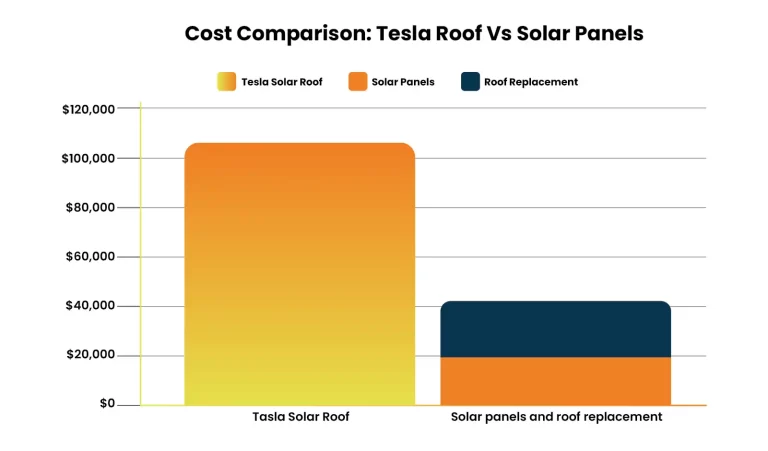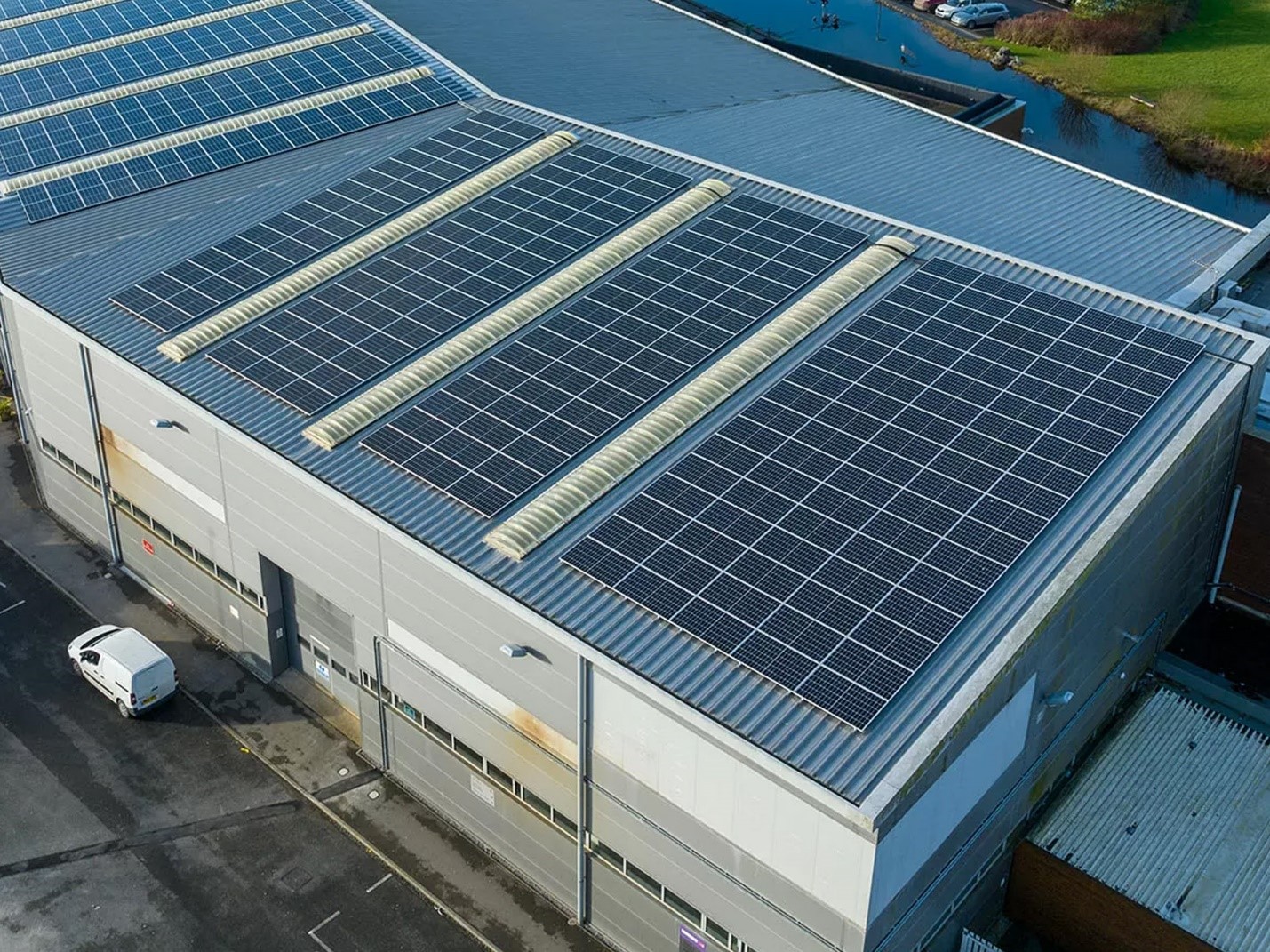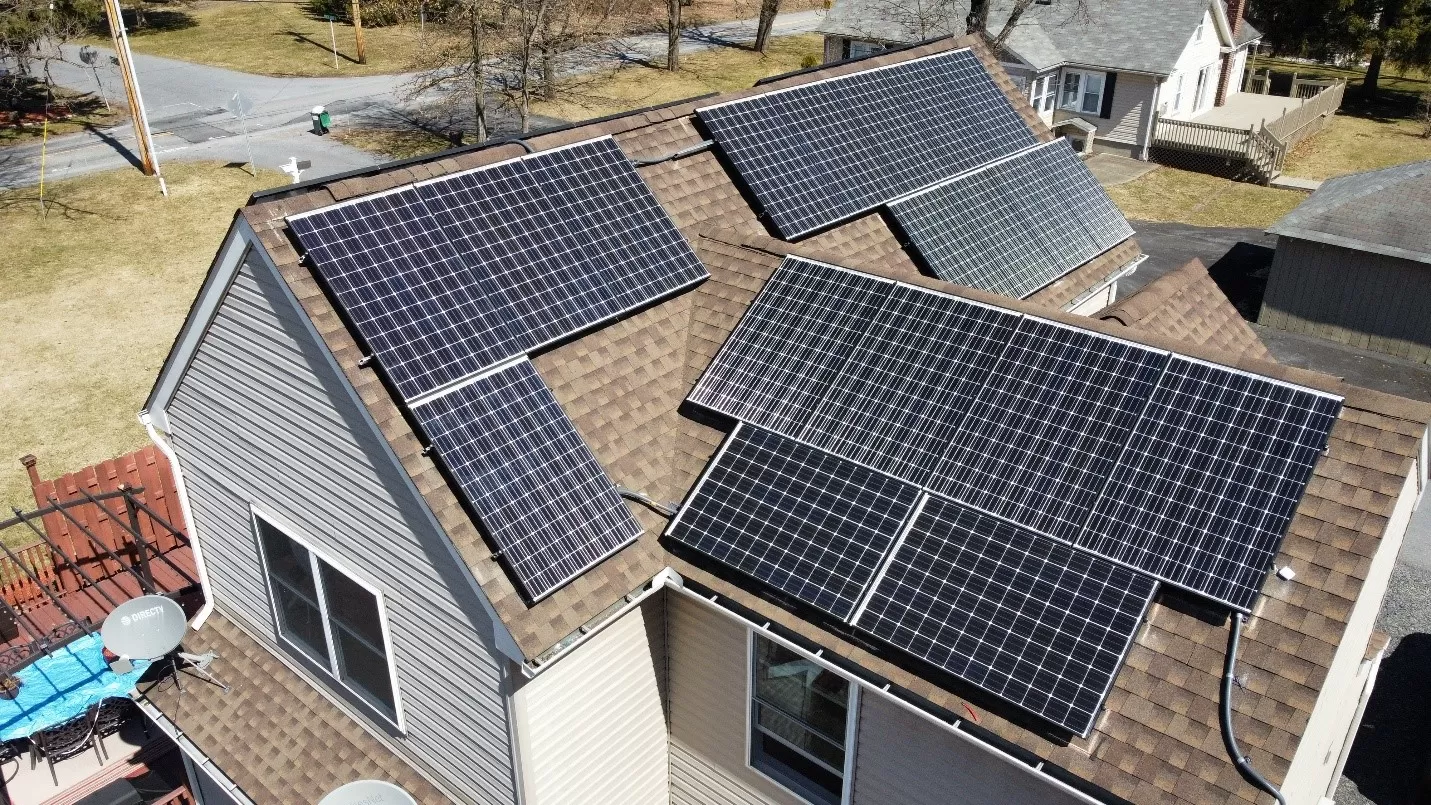- Updated On: June 05, 2025
Tesla Solar Roof:
Are the Solar Shingles Worth it?
As solar is becoming a popular choice for generating clean power, modern technology is also evolving. You may have heard about “Tesla Solar Roof,” an innovation in the solar market. It combines solar panel technology with traditional roof shingles to make a modern solar system that not only generates clean energy but is aesthetically attractive too. However, as per Tesla CEO Elon Musk, these solar shingles are the “premium product” of the company. The cost of a Tesla roof is much higher than installing a solar panel system. Depending on your power requirements and system size, an average Tesla Solar Roof costs upwards of $100,000. On the other hand, even if you need to replace your roof before rooftop solar installation, it will be 75% cheaper than a Tesla roof. It may be a fit if you are conscious about the aesthetics regardless of cost.

Tesla solar shingles may seem visually appealing, but it is essential to consider the pros and cons, Tesla roof tile costs, etc., according to your energy goals. In this article, alongside everything you should know about it, we will compare solar roofs with solar panels to help you make a smart decision for your home.
What is a Tesla Solar Roof?
Tesla Solar Roof is a building-integrated photovoltaic (BIPV) system that combines the features of solar panels and roof shingles. Although Tesla’s electric cars (EVs) are popular, the business also entered the solar industry in 2016 when CEO Elon Musk headed the acquisition of SolarCity.

The roof consists of the same small blank solar shingles. The shingles are solar cells that generate electricity. The company says the steel and glass solar roofing tiles have an unmatched, beautiful design, which gives you another choice while utilizing solar energy to power your house. Although most other solar companies offer solar roof tiles like Tesla, this option is much more expensive than an efficient solar panel system.
Tesla Solar Shingles Roof Cost Trend
The cost of a Tesla solar roof has risen by about 170% over the last half-decade, with a massive increase in the latter half of 2023, according to 2020 estimates. The firm’s decision to use third-party installers rather than making direct installations may partially be the reason for the rising costs. The firm, however, appears to have underestimated the labor and material expenses of its roof shingles.

What factors determine the Tesla Roof cost?
The price of the Tesla Solar Roof varies with the equipment and complexity of fitting the roof. There are four main components of the roofing system that decide the price:
Energy-Producing Tiles:
Protected glass tiles that absorb the sun’s energy like a PV panel are called energy-producing tiles. They look like decorative tiles and they are very expensive too.
Non-Energy-Producing Tiles:
The remaining shingles consist of non-solar steel tiles. The color and trim on those are almost identical to the functional energy-production solar shingles.
Tesla Solar Inverter:
To transform generated direct current electricity to usable alternating current electricity, a solar system needs to have at least one solar inverter. Two models are available for a Tesla solar inverter: 3.8 kW and 7.6 kW. Safety features such as no neutral wires, arc and ground fault protection, and rapid shutdown built-in are provided.
Tesla Powerwall:
Any Tesla Energy system, such as a Solar Roof, comes with a Tesla Powerwall, though it is not always required. With Tesla Powerwalls, you store the clean energy made when it’s not sunny outside or in case of a power outage.
What are the pros and cons of installing Tesla Solar roof tiles?
Let’s analyze the advantages and disadvantages of installing a solar roof to make your decision-making more convenient:

Comparing Tesla Solar Roof vs. Traditional Solar Panels:
We will now compare solar shingles with traditional solar panels based on performance, savings, and costs to make it easy to decide on the best option.
Cost:
Although a solar roof costs nearly five times more than a solar panel installation, it includes complete roof replacement. To compare both options, you should compare the cost of installing solar panels and replacing the roof with solar shingles. The studies show that it is still more expensive to install solar roof tiles than to replace and add solar panels on rooftops.

Performance:
As shingles put flat against the roof, they generate less energy than solar panels. This is because the solar tiles must be positioned at the same angle as your roof, which may not be optimal for producing power. In contrast, traditional residential solar panels are fixed to racking systems and can be oriented in the right direction for optimal solar energy generation. Also, to keep the modules cool and efficient, this setting allows airflow beneath them.

Savings:
The solar savings will vary depending on your location, the energy output of the rooftop solar system, utility net metering policies, and local electricity prices. It is unlikely that you will ever see a return on your investment due to the high upfront cost of the solar shingles. By the end of the 25-year lifespan, the system will only reduce utility bills by roughly one-third of its original cost, according to Tesla’s price and production projections. Instead, the solar payback period is usually around 12 years, and you can enjoy free electricity for the next 15-20 years of the solar panel lifespan.

Aesthetics:
In terms of appearance, the Tesla Solar Roof beats conventional solar panels. Since solar shingles resemble a roof, it is almost impossible to tell the difference between solar and non-solar roof tiles. You can benefit from solar energy without compromising the exterior of your house. While, on the other hand, rooftop solar panels aren’t fully integrated with your shingles, they stand out a little more on your roof.
Is the Tesla Solar Roof worth the investment?
Tesla Solar Roof can be a worthy option for wealthy, tech-savvy homeowners with a passion for aesthetics. Furthermore, the Tesla brand is particularly popular among those seeking a luxurious home improvement. However, if you live in an area with HOA restrictions, switching to solar by installing roof shingles might be a good option.
Concluding all, the Tesla Solar Roof is not worth it. Installing solar panels and replacing the roof is usually more cost-effective. Except for aesthetics, traditional solar panels outshine the Tesla Solar Roof. Installing solar panels is cheaper, generates more electricity, and is accessible. Also, you can reduce the upfront cost with a 30% federal tax credit and state solar incentives.
Solar SME is the best solar installation company near you, offering affordable residential and commercial solar solutions tailored to your power needs. Get a FREE quote for your solar savings with our smart solar calculator today!
Related Articles:
In the business world, every penny counts. Business owners are always on the lookout for ways to cut costs and boost profits.
If you are planning to go solar, the first thing you would think about will be your roof. Rooftop installations are very common – compared to ground mount.
In the United States, rising inflation, high energy costs, extreme weather, frequent power outages, and less grid reliance are the major reasons for switching to solar.



